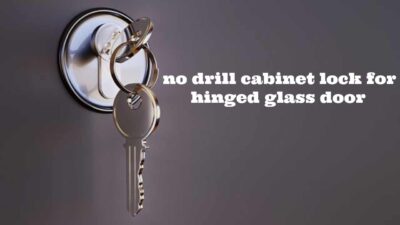As homeowners, we invest a lot of time and money in making our houses comfortable and inviting. But when the weather takes a turn for the worse, our homes can become vulnerable to damage and even danger. From extreme heatwaves to freezing temperatures, from hurricanes to blizzards, the elements can wreak havoc on our property and our peace of mind. That’s why it’s essential to take steps to keep our homes safe and secure, no matter what Mother Nature throws our way. In this article, we’ll explore some practical tips and strategies for battling the elements and protecting your home from weather-related hazards. Whether you’re a seasoned homeowner or new to the game, these insights will help you prepare for anything and keep your family and property safe and sound. So let’s dive in and discover how to weather any storm!
The Importance of Home Safety and Security
Your home is your sanctuary, your safe haven, your castle. It’s where you go to relax, recharge, and spend time with your loved ones. But it’s also where you keep your most valuable possessions, from your electronics and jewelry to your family heirlooms and important documents. That’s why it’s crucial to prioritize home safety and security, especially when it comes to extreme weather conditions.
The first step in ensuring your home’s safety and security is to assess its vulnerabilities. Are there weak spots in your roof or walls that could be susceptible to high winds or heavy rain? Do you have trees or other structures that could fall on your home during a storm? Are your windows and doors secure enough to withstand a break-in or forced entry? These are all questions you should ask yourself to identify potential risks and take action to mitigate them.
Once you’ve assessed your home’s vulnerabilities, it’s time to create a plan for how to keep it safe and secure in any weather. This plan should include everything from emergency supplies and evacuation routes to reinforcement measures and professional services. By taking a proactive approach to home safety and security, you can minimize the impact of extreme weather conditions and protect your family and property.
Understanding the Different Weather Elements and Their Potential Damage
To effectively battle the elements and keep your home safe and secure, it’s essential to understand the different types of extreme weather conditions and their potential damage. Here are some of the most common weather elements and how they can impact your home:
- Heatwaves: Extreme heat can cause damage to your home’s foundation, siding, and roof. It can also lead to power outages and the overuse of air conditioning, which can increase your energy bills.
- Cold snaps: Freezing temperatures can cause pipes to burst, leading to water damage and potential mold growth. They can also put a strain on your heating system, leading to higher energy bills and potential breakdowns.
- Hurricanes: High winds and heavy rain can cause significant damage to roofs, walls, and windows. Storm surges can also lead to flooding and water damage, while power outages can leave you without essential services.
- Tornadoes: Tornadoes can cause devastating damage to homes, often tearing off roofs and entire walls. They can also cause power outages and uprooted trees, which can fall on your home.
- Blizzards: Heavy snowfall and ice can cause damage to your home’s roof and siding, as well as lead to power outages and blocked roads.
By understanding the potential damage of each weather element, you can take steps to prepare your home and minimize its impact.
Preparing for Extreme Weather Conditions
One of the most important steps in battling the elements and keeping your home safe and secure is to prepare for extreme weather conditions. This means having emergency supplies on hand, such as food, water, and medical supplies, as well as a plan for evacuation or sheltering in place. Here are some tips for preparing for extreme weather conditions:
- Stock up on emergency supplies: Make sure you have enough food, water, and medical supplies to last at least three days. You should also have a battery-powered or hand-crank radio, flashlights, and extra batteries.
- Create an evacuation plan: If you live in an area prone to hurricanes, tornadoes, or flooding, you should have a plan for evacuating your home. This plan should include a designated meeting place for your family and a route to safety.
- Reinforce your home’s structure: If your home is vulnerable to high winds or heavy rain, you should reinforce its structure. This may mean installing hurricane shutters or reinforcing your roof.
- Secure windows and doors: Windows and doors are often the weakest points in a home’s defense against extreme weather conditions. Make sure they are secure and that you have covers or shutters to protect them.
By preparing for extreme weather conditions, you can minimize the impact on your home and keep your family safe.
Essential Equipment for Home Safety and Security During Severe Weather
In addition to emergency supplies and evacuation plans, there are certain types of equipment that can help keep your home safe and secure during severe weather. Here are some of the most essential types of equipment:
- Backup generator: A backup generator can provide power to your home during a power outage, ensuring your essential services stay online.
- Sump pump: A sump pump can prevent flooding in your basement or crawl space, ensuring your home stays dry and mold-free.
- Weather radio: A weather radio can provide up-to-date information on severe weather conditions, ensuring you stay informed and can take action as needed.
- Surge protector: A surge protector can protect your electronics and appliances from power surges, ensuring they stay safe and functional.
By investing in essential equipment, you can provide an added layer of protection to your home and keep it safe and secure during severe weather.
Assessing and Reinforcing Your Home’s Structural Integrity
One of the most critical aspects of battling the elements and keeping your home safe and secure is assessing and reinforcing its structural integrity. This means identifying weak spots in your home’s foundation, walls, and roof and taking action to strengthen them. Here are some tips for assessing and reinforcing your home’s structural integrity:
- Inspect your foundation: Look for cracks or other signs of damage in your home’s foundation, which can weaken its structural integrity. If you find any issues, consult with a professional to take corrective action.
- Check your roof: Your roof is one of the most vulnerable parts of your home during extreme weather conditions. Look for loose or missing shingles, as well as signs of wear and tear. Consider reinforcing your roof with hurricane straps or other measures.
- Reinforce your walls: Your walls can also be vulnerable to high winds and heavy rain. Consider reinforcing them with additional bracing or other measures. You should also keep the type of siding you use in your home in mind. In snowy conditions like you often find in Colorado, investing in something like James Hardie siding in Denver or other cities can help your home face the torrential snowfall.
By assessing and reinforcing your home’s structural integrity, you can minimize the impact of extreme weather conditions and keep your home safe and secure.
Securing Windows, Doors, and Other Openings
Windows, doors, and other openings are often the weakest points in a home’s defense against extreme weather conditions. That’s why it’s essential to secure them and protect them from damage. Here are some tips for securing windows, doors, and other openings:
- Install storm shutters: Storm shutters can protect your windows from high winds and heavy rain, minimizing the risk of damage and water infiltration. They can also provide added security against break-ins.
- Reinforce your doors: Your doors should be secure enough to withstand forced entry. Consider installing deadbolts, reinforcing the doorjamb, or installing a security door.
- Seal other openings: Other openings, such as skylights and vents, can also be vulnerable to damage. Make sure they are sealed and protected from wind and rain.
By securing windows, doors, and other openings, you can minimize the risk of damage and keep your home safe and secure.
Evacuation Planning and Emergency Preparedness
In some extreme weather conditions, evacuation may be necessary to keep your family safe. That’s why it’s essential to have a plan in place and be prepared to act quickly.
Here are some tips for evacuation planning and emergency preparedness:
- Have a designated meeting place: If your family members are separated during an evacuation, have a designated meeting place where you can all regroup.
- Plan your evacuation route: Know the best route to safety, and make sure you have a backup route in case your primary route is blocked.
- Pack an emergency kit: Make sure you have an emergency kit with essential supplies, such as food, water, and medical supplies.
- Have a plan for pets: If you have pets, make sure you have a plan in place for their evacuation as well.
By having a plan in place and being prepared to act quickly, you can keep your family safe during extreme weather conditions.
Maintaining Your Home’s Safety and Security Throughout the Year
Keeping your home safe and secure is an ongoing process that requires regular maintenance and attention. Here are some tips for maintaining your home’s safety and security throughout the year:
- Schedule regular inspections: Have your home inspected regularly for signs of wear and tear or damage, and take corrective action as needed.
- Keep your yard tidy: Trim trees and bushes, and remove any debris that could become a hazard during extreme weather conditions.
- Test your equipment: Regularly test your backup generator, sump pump, and other essential equipment to ensure they are in good working order.
- Update your emergency supplies: Make sure your emergency supplies are up-to-date and replenished as needed.
By maintaining your home’s safety and security throughout the year, you can minimize the impact of extreme weather conditions and keep your family safe.
Professional Services for Home Safety and Security
In some cases, it may be necessary to consult with professional services to ensure your home’s safety and security. Here are some types of professional services you may want to consider:
- Home inspection services: A professional home inspector can identify potential vulnerabilities in your home and recommend corrective actions.
- Roofing services: If your roof is damaged or needs reinforcement, a professional roofing service can provide the necessary repairs or installations.
- Security system services: A security system can provide added protection against break-ins and intruders. A professional security system service can install and maintain your system.
- Emergency restoration services: If your home suffers damage during extreme weather conditions, emergency restoration services can help repair and restore it.
By consulting with professional services, you can ensure your home is safe and secure and minimize the risk of damage or danger.
Conclusion
Battling the elements and keeping your home safe and secure during extreme weather conditions requires preparation, planning, and ongoing attention. By assessing your home’s vulnerabilities, preparing for emergencies, and reinforcing its structure and defenses, you can minimize the impact of extreme weather conditions and keep your family safe. Whether you’re a seasoned homeowner or new to the game, these tips and strategies will help you weather any storm and protect your property and peace of mind. So take action today, and start preparing your home for whatever Mother Nature throws your way!









